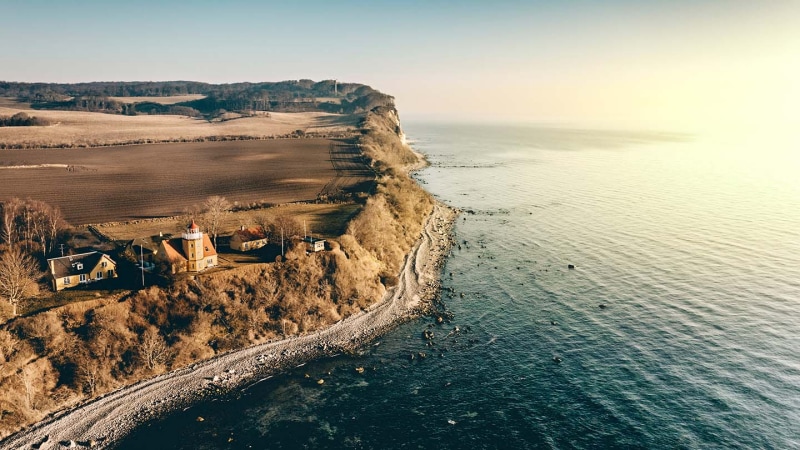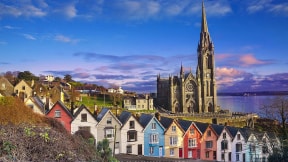Guide to cruising the Baltic Sea

Quick insights
- The Baltic Sea, bordered by nine countries, offers a rich tapestry of history, culture and natural beauty, making it a popular destination for cruising.
- Baltic cruising is preferable during the summer months of June, July and August, when the weather is warm and the days are long.
- While the Baltic Sea waters can occasionally be rough, it is generally calm, especially during the summer months.
If variety is the spice of life, then cruising the Baltic Sea is the travel equivalent of a five-course gourmet meal. From the medieval charm of Tallinn to the vibrant culture of Copenhagen, cruising the tranquil waters of the Baltic Sea is an adventure waiting to happen.
Exploring the Baltic Sea: A brief background
The Baltic Sea is located in Northern Europe and is bordered by nine countries: Denmark, Estonia, Finland, Germany, Latvia, Lithuania, Poland, Russia and Sweden. The Baltic Sea has a rich history, with each bordering country offering its own historical and cultural experiences.
For instance, Finland offers a mix of eastern and western influences in its architecture and design, and Germany's Baltic Coast is dotted with historic seaside resorts and lighthouses. Latvia is home to Riga, a city known for its Art Nouveau architecture and vibrant cultural scene, while Lithuania's capital, Vilnius, is a United Nations Educational, Scientific and Cultural Organization (UNESCO) World Heritage site with a rich history dating back to the Middle Ages. Poland's Baltic coast is known for its sandy beaches and the historic city of Gdansk, and Sweden's coastline contains thousands of beautiful islands and islets.
People are drawn to the Baltic Sea for its diverse range of attractions. Whether it's exploring the stunning natural landscapes, immersing themselves in the history and culture or simply enjoying the unique experience of cruising the Baltic Sea, there's something for everyone.
Best time for cruising the Baltic Sea
The ideal time for cruising the Baltic Sea is during the summer months, from June to August. During this time, the weather is warm, the days are long and the sea is generally calm, making it a preferable time for Baltic cruising. The summer season also coincides with a number of festivals and events in the region, adding to the overall experience.
That said, it's worth noting that this is also the peak tourist season, so popular destinations can be crowded. If you prefer a quieter experience, the shoulder seasons of late spring (April to June) and early fall (September to October) can be a good choice, though the weather can be less predictable.
Navigating the waters: Is the Baltic Sea rough for cruising?
While the Baltic Sea waters can occasionally be rough, especially during the winter months, it is generally calm, particularly during the summer months. As with any sea voyage, conditions may vary, so it's always a good idea to check the weather forecast before your trip.
Planning your journey: An ideal itinerary for a Baltic Sea cruise
While there is no one ideal or best itinerary, below is one example that might check off some of your boxes when planning your cruise:
- Start in Copenhagen, Denmark: With its beautiful harbor and historic sites, Copenhagen may be an excellent starting point for your Baltic Sea cruise. Denmark is known for its Viking heritage and modern design, all of which is available for you to explore and learn about in Copenhagen.
- Visit Tallinn, Estonia: Wander the cobblestone streets of Estonia’s capital, Tallinn, a UNESCO World Heritage Site. Tallinn boasts a beautifully preserved medieval old town that is unlike any other city in Europe.
- End in Stockholm, Sweden: Finish your cruise in Stockholm, where you can explore the city's beautiful archipelago and historic sites. These include the Royal Palace, the official residence of the Swedish monarch, and the Vasa Museum, which houses the world's only preserved 17th-century ship.
Travel documents for a Baltic Sea cruise
You will need a valid passport for your Baltic Sea cruise. Depending on your nationality and the countries you plan to visit, you may also need a visa. Be sure to get your passport and check the visa requirements well in advance of your trip, as the wait time for these can be more than two months.
Preparing for your trip: What to know before cruising the Baltic Sea
There are many considerations when planning a trip to the Baltic Sea, including the following:
- Weather: While the summer months offer warm weather, it can still be cool, especially in the evenings. Be sure to pack layers.
- Currency: Much of Europe uses the Euro, but the Baltic region largely does not. Each Baltic country has its own currency, so you may want to research exchange rates and possibly get some local currency before you head out.
- Language: While English is widely spoken, learning a few basic phrases in the local languages can enhance your travel experience.
The bottom line
Cruising the Baltic Sea offers a unique opportunity to explore the history, culture and natural beauty of Northern Europe. Whether you're a seasoned traveler or embarking on your first cruise, the Baltic Sea is a destination that promises an unforgettable journey. From planning your itinerary to preparing for your trip, this guide provides information you can use to make the most of your Baltic cruising experience.



